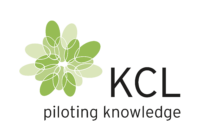Have you ever thought about how important it is for packaging to really do its job? This is where barrier properties testing comes into play. It’s all about figuring out how well new packaging materials can stand up against things like gases, moisture, and even smells. This kind of testing is super important for making sure your products stay fresh and last longer. By checking these properties, we can make sure that the packaging solutions we use are up to the mark in terms of performance and safety.
How We Test Barrier Properties?
When it comes to barrier properties testing, there are a few methods we use to see how well packaging materials can block gases, vapours, and other elements. One popular technique is the gas transmission rate test. This measures how quickly gases like oxygen or carbon dioxide can sneak through a material. It’s important for products that are sensitive to oxidation or carbonation.
Another popular technique is the water vapor transmission rate test. This one checks how much moisture can get through, which is crucial for products that need to stay dry or don’t like humidity. Aroma barrier tests ensure that packaging can keep certain scents in or out, which is especially important for food and cosmetics.
We also use some advanced techniques like infrared spectroscopy and gas chromatography. These give us a deep dive into the chemical makeup and structure of packaging materials, helping us understand their barrier properties inside and out.
How Do Barrier Properties Affect Packaging Efficiency?
The efficiency of packaging is hugely impacted by its barrier properties. Good barriers mean your products are protected from things like oxygen and moisture that can spoil them. This protection is key to keeping perishable goods fresh and extending their shelf life. Efficient barriers can cut down on product spoilage and waste, boosting overall packaging efficiency. This means also savings in costs
On top of that, strong barrier properties can make packaging more sustainable. You can use thinner materials without losing protection, which means less environmental impact. It’s a win-win, especially with the growing demand for eco-friendly packaging.
Why Test New Packaging Materials?
Testing new packaging materials is crucial to make sure they hit the right notes for safety, performance, and sustainability. Without proper testing, you risk product contamination, spoilage, or a shorter shelf life, which can lead to financial losses and a hit to your brand’s reputation.
Barrier properties testing is especially vital for industries like food, pharmaceuticals, and cosmetics, where product integrity is everything. By running thorough tests, manufacturers can identify any weak spots in packaging materials and fix them before they hit the shelves.
Moreover, testing paves the way for innovative packaging solutions that offer better protection and functionality. In a competitive market, where consumer expectations are always changing, companies need to keep up and adapt.
What Challenges Come with Barrier Testing?
One big challenge is getting precise and accurate measurements. Variability in test conditions, like temperature and humidity, can mess with results, so it’s crucial to keep things controlled during testing.
Another challenge is the complexity of new materials, which might need advanced testing methods to fully grasp their barrier properties. This can take a lot of time and resources, especially with multilayered or composite materials.
And let’s not forget the push for sustainable packaging materials. Balancing barrier properties with environmental concerns can be tricky. Traditional materials like plastics are great barriers but not so eco-friendly. Finding alternatives that offer similar protection without compromising sustainability is a key focus in material barrier analysis.
How Does KCL Ensure Quality in Material Testing?
At KCL, we’re doing our packaging materials testing with high quality and precision.
Our comprehensive lab services with state-of-the-art equipment and our team of experts are here to support the development of innovative packaging solutions that meet the highest standards of performance and sustainability.
Confidentiality, expertise, and flexibility are the pillars of our approach. We work closely with our clients to understand their specific needs and provide tailored solutions that enhance their product development processes. Our commitment to high quality ensures that our clients can trust the results of our testing and rely on us for their packaging innovation needs.
What’s New in Packaging Barrier Testing?
There’s also a big push towards developing sustainable materials that offer excellent barrier properties without relying on traditional plastics. This includes using bio-based materials and coatings that provide similar protection while being kinder to the environment.
At KCL, we’re leading the way in these advancements, using our unique piloting platform and expertise in material barrier analysis to drive innovation in packaging solutions. Our commitment to research and development ensures that we stay ahead of the curve, providing our clients with cutting-edge solutions that meet the demands of a rapidly changing market.
